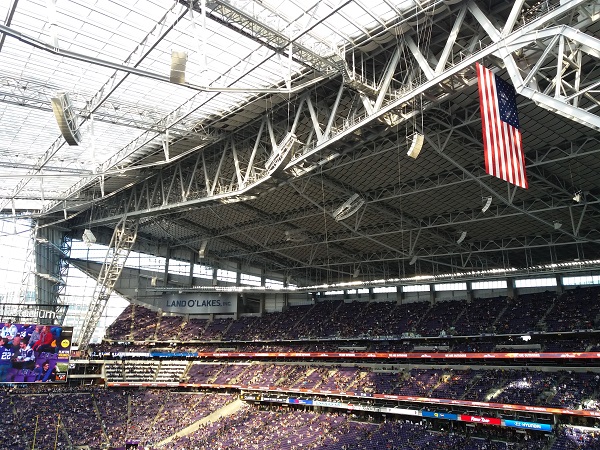
If you are an alumnus of the University of Minnesota and are a tour guide in Luxembourg city, you think that you know most of the links to the Midwest; but if your son has been studying at the U of M for 6 years, you certainly learn new details.
The 19th and 20th century saw several waves of emigration from the Grand Duchy. Due to the poor living conditions, having practically nothing else but agriculture, a massive departure of Luxemburgers took place, especially to North America. Luxembourg lost as much as 40% of its population at that time.
Before the industrial period, 80% of the population made their living from agriculture which offered very weak production, while the remaining 20% included handcraft and local commerce. Luxembourg lived in massive and permanent poverty that led to emigration. Such emigration even continued to take place after the industrial start-up, because a part of poor farmers refused to work in mines and steelworks, rather preferring to leave for transatlantic destinations where they hoped to earn a decent living in agriculture.
For many decades, the American Building at the corner of rue Philippe II - rue Notre Dame, was a travel and emigration agency which, between 1897 and 1937, booked the departure for overseas for some 20,000 emigrants. The company, Derulle-Wigreux & Sohn, had a virtual monopoly of the emigration business from Luxembourg to the United States. The “building-to-be-preserved” was constructed in 1907, and it features an impressive gilded American eagle on top of the cupola.
Most of the Luxembourgers who emigrated to the USA settled in Wisconsin and Minnesota; both states have a town or a township named Luxembourg.
Minneapolis and St. Paul, the capital of Minnesota, count 60% of the state’s residents, around 3 million. Many know about Luxembourg, mostly thanks to the Schleck brothers famed for the cycling exploits. Minneapolis, with its fast-growing downtown, was once the flour capital of the United States. Its mill museum presents that during the Great War (as WWI was called), flour from here was shipped to Belgium as a humanitarian act within the "Millers’ Belgian Relief Movement", worth 500,000 USD at the time.
If you ask any American, everyone remembers when the Metrodome, the home of the Vikings footballers, collapsed in 2010 under heavy snow. Minneapolis has now a new stadium, forming a huge viking ship. The US Bank stadium was said to be constructed of building materials from the United States. However, it was discovered some two years ago that 20% of the steel construction, namely 3 thousand tons of huge trusses, arrived from - where else - but Differdange. Though ArcelorMittal has over 25 steel works in the States, the so-called HI-STAR grade 65 steel can only be produced in tiny Luxembourg. This high-strength steel has saved 30% weight on the stadium’s roof structure. The trusses are more than impressive. The total cost passed 1 billion USD, and the Vikings play only 10 games here, where 65,000 fill the stadium, since it opened last September.
The Minneapolis Institue of Arts hosts a temporary exhibition, unique in the country, on Martin Luther. Luther nailed his 95 theses on the doors of several Wittenberg churches 500 years ago. With his positions against what he saw as abusive practices by preachers selling plenary indulgences, Luther established the Protestant Church in 1517. Among the hundred edificies from Europe, one would see the pilgrim’s garment of Emperor Maximilian I that was previously held in the Abbey of Echternach. Maximilian visited the town during a pilgrimage in 1512 and donated the garment he was wearing in the procession and the worship service, to the Benedictine monks.
Minneapolis is truly a great place. One article cannot have everything, such as the Mall of America (Minnesota has no tax on clothes). It is so warm in summer and so cold in winter that the absolute difference passes 100 degrees. In winter people hardly walk on the streets downtown. 68 blocks are interconnected by the world’s longest skyway system that is 13 km long as passes through office buildings, department stores, banks, etc. Bus stops are equipped with heating devices. Snoopy is from there, and, and …
Photos by Robert Földes









